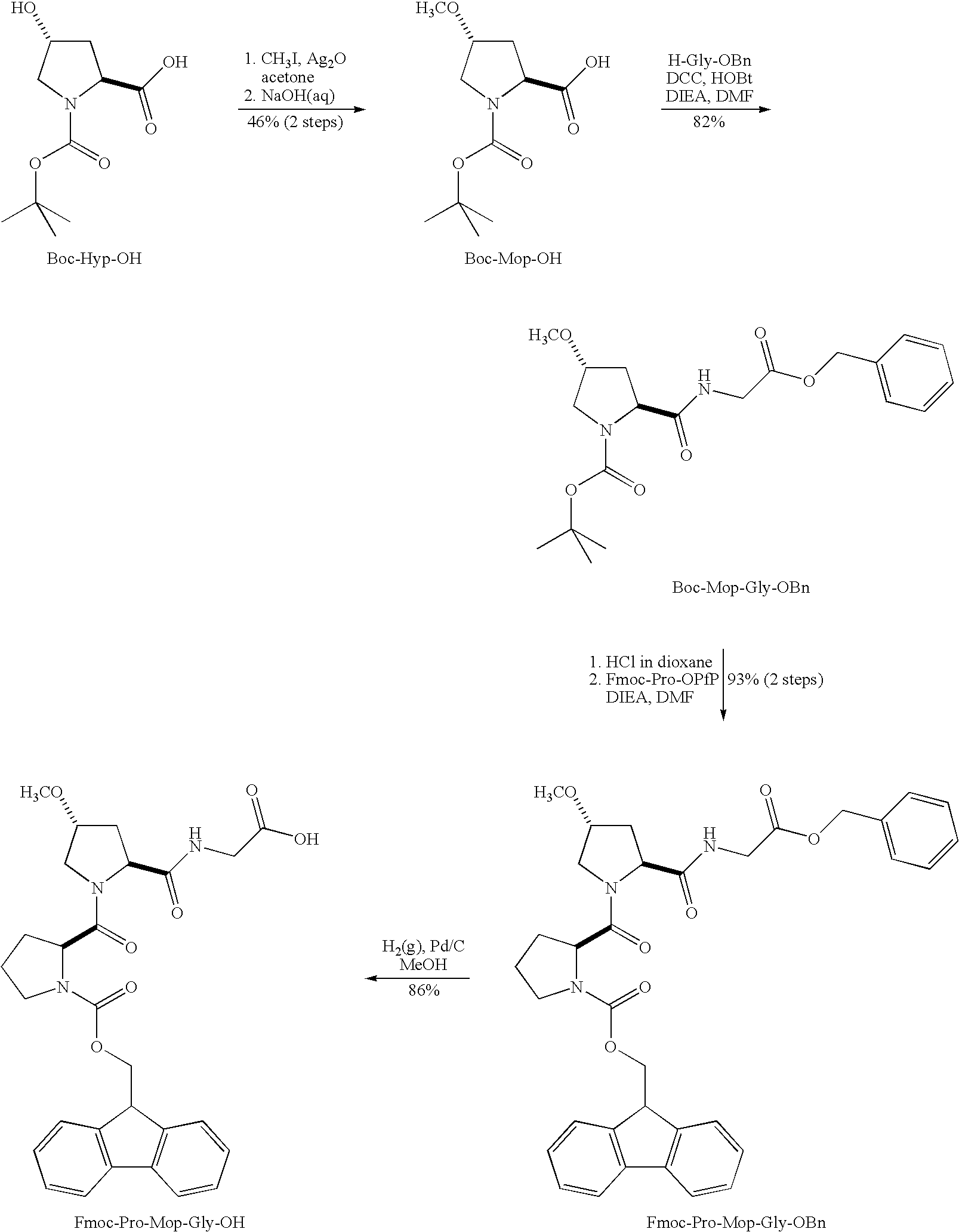Stabilization of the collagen triple helix by O-methylation of hydroxyproline residues
a technology of hydroxyproline and stabilizer, which is applied in the direction of immunoglobulins, peptides/protein ingredients, peptides, etc., can solve the problems of fragile nature of collagen grafts during and after surgery, low frequency of hyp,
- Summary
- Abstract
- Description
- Claims
- Application Information
AI Technical Summary
Benefits of technology
Problems solved by technology
Method used
Image
Examples
examples
Materials and Methods
[0062]Chemicals were from Aldrich or Acros (reagent grade or better), and were used without further purification. Amino acids were from Novabiochem, with the exception of Boc-Hyp-OH, which was from Chem-Impex International (Wood Dale, Ill.). (ProHypGly)10.10H2O was from Peptides International (Louisville, Ky.). Anhydrous DMF and CH2Cl2 were obtained from a CYCLE-TAINER® solvent delivery system from J. T. Baker (Phillipsburg, N.J.). All other solvents were from Fisher Scientific (Pittsburgh, Pa.). Flash chromatography was performed with columns of silica gel 60, 230-400 mesh (Silicycle, Québec City, QC, Canada). Semi-preparative HPLC was performed with a Zorbax C8 reversed-phase column and analytical HPLC was performed with an Agilent C8 reversed-phase column. Linear gradients of solvent A (H2O with 0.1% v / v TFA) and solvent B (CH3CN with 0.1% v / v TFA) were used for HPLC analysis and purification.
[0063]The removal of solvents and other volatile materials “under r...
PUM
| Property | Measurement | Unit |
|---|---|---|
| melting temperature | aaaaa | aaaaa |
| melting temperature | aaaaa | aaaaa |
| pressure | aaaaa | aaaaa |
Abstract
Description
Claims
Application Information
 Login to View More
Login to View More - R&D
- Intellectual Property
- Life Sciences
- Materials
- Tech Scout
- Unparalleled Data Quality
- Higher Quality Content
- 60% Fewer Hallucinations
Browse by: Latest US Patents, China's latest patents, Technical Efficacy Thesaurus, Application Domain, Technology Topic, Popular Technical Reports.
© 2025 PatSnap. All rights reserved.Legal|Privacy policy|Modern Slavery Act Transparency Statement|Sitemap|About US| Contact US: help@patsnap.com



